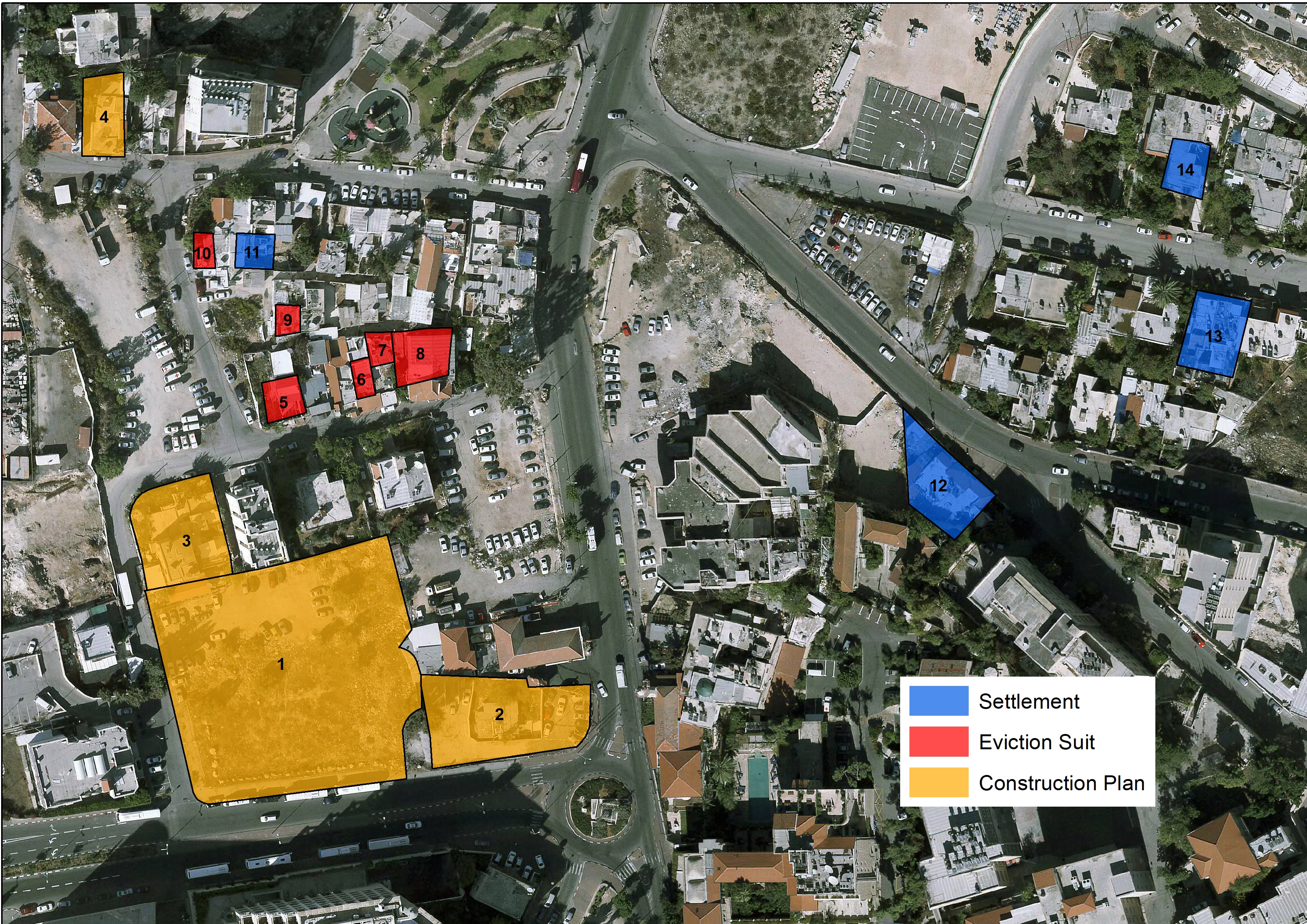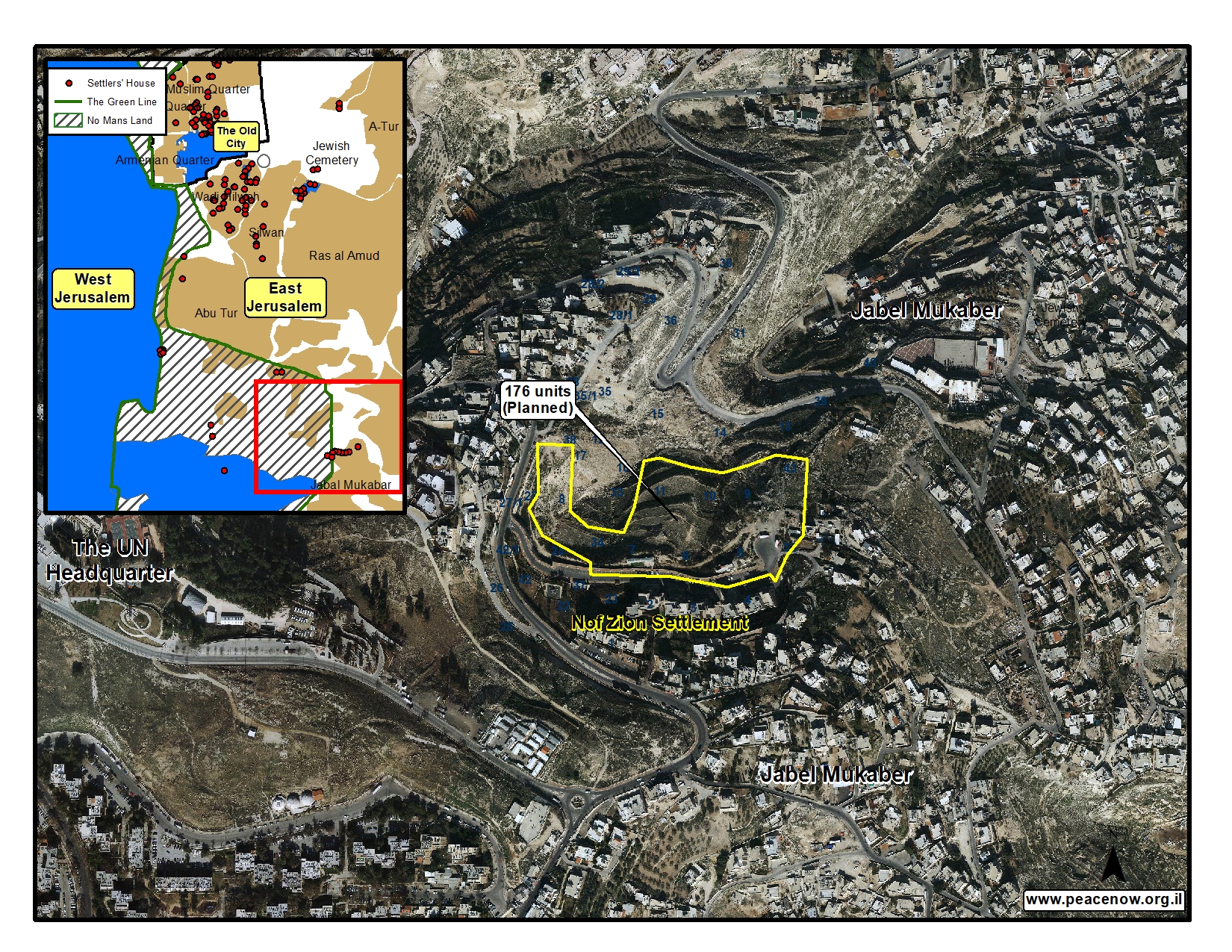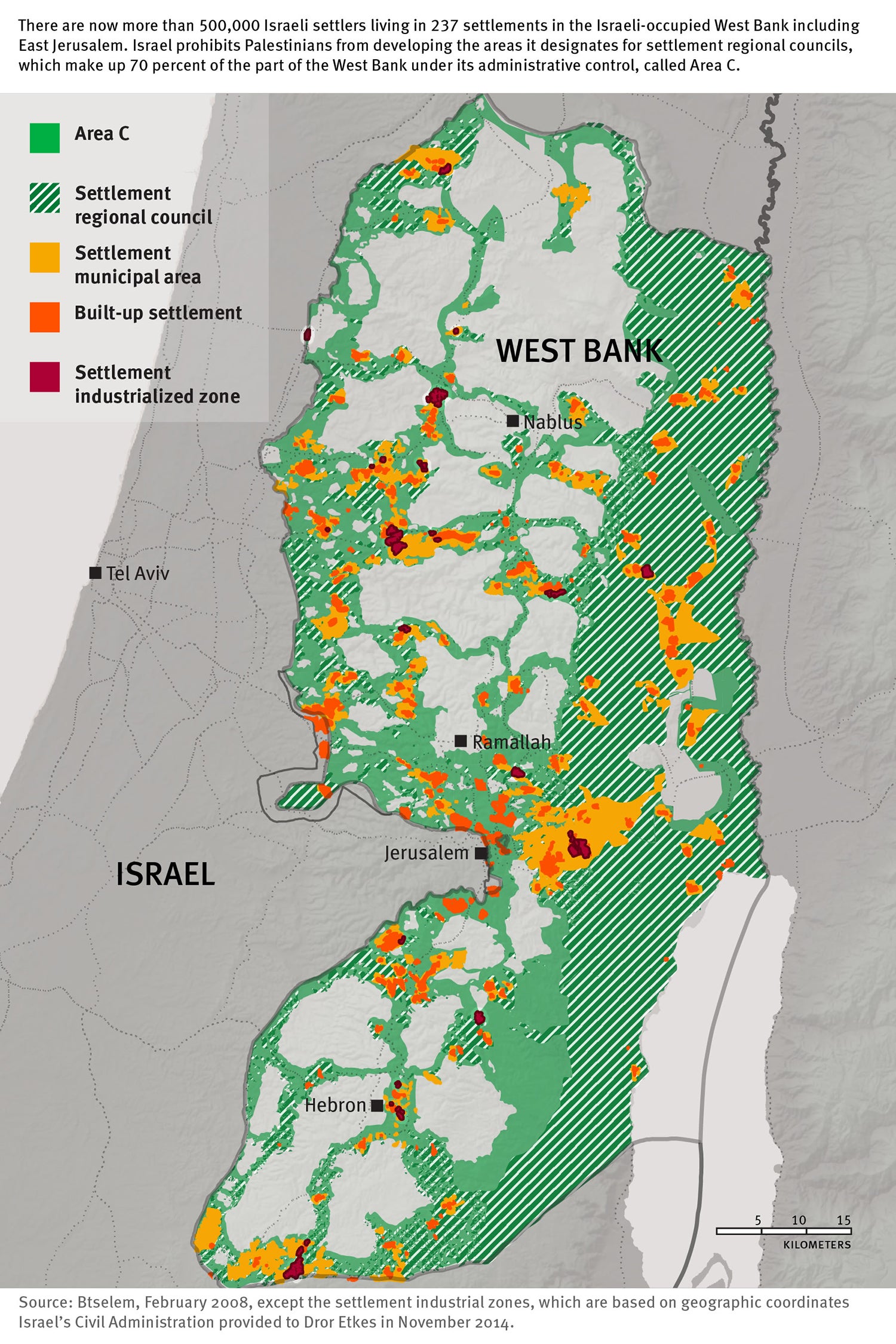Welcome to FMEP’s Weekly Settlement Report, covering everything you need to know about Israeli settlement activity this week.
To receive this report via email, please click here.
September 7, 2017
- In Sheikh Jarrah, Palestinians Evicted, Settlers Move In
- Major Expansion in Settlement Enclave – Approval of Permits Imminent
- High Court Lets Settlers Stay in Hebron House [That They Took Over Illegally]
- Amichai Update: Work on New Settlement to Resume with Infusion of Government Funds
- U.S. Ambassador Questions if the Occupation Exists, Minimizes Impact of Settlement Enterprise
- Bonus Reads
Comments, questions, or suggestions? Email Kristin McCarthy at kmccarthy@fmep.org.
In Sheikh Jarrah, Palestinians Evicted, Settlers Move In
On September 5th, the Israeli army evicted members of the Shamasneh family from their home in Sheikh Jarrah, a Palestinian neighborhood in East Jerusalem; they had lived in that home since 1964. Within hours of the eviction, extremist Israeli settlers moved into the home. This is the first eviction to be carried out in Sheikh Jarrah since 2009, when evictions there inspired a sustained domestic and international protest.
The Shamasneh family was sent an eviction notice back in 2013, after a court ruled in favor of Israelis who sought to “redeem” the home. Their case was based on an Israeli law that allows Jews to reclaim property and land they were forced to abandon in 1948, when Jordan captured East Jerusalem (a right Palestinians are not afforded with respect to properties they were forced to abandon in what became Israel in 1948). The eviction of the Shamasneh family was repeatedly delayed out of “humanitarian concerns” over the health of the elderly Shamasneh patriarch. Earlier this year, it became clear the eviction was going to be carried out when a wave of provocative East Jerusalem settlement plans were advanced, including multiple plans to build more settlement units in the Sheikh Jarrah neighborhood.
Regarding the Shamasneh’s case, Ir Amim wrote:
Today’s eviction of the Shamasneh family symbolizes the boldness with which these settlement activities in the most sensitive part of East Jerusalem are now being executed – with the full backing of the state – and the pressing need to halt this escalation of events in order to preserve the waning viability of the two state solution.
Regarding that same eviction, East Jerusalem settler impresario (and city councilman) Aryeh King exulted:
I expect more evictions this year of residents who refuse to recognize the Jewish owners of the properties where they are living. With the opening of the new National Insurance Institute nearby, the Nahalat Shimon [Shimon Hatzaddik] neighborhood is going to see a significant expansion of Jewish settlement, which residents of Jerusalem have waited for years to see.
On the evening prior to the eviction, Israeli forces raided several Palestinian homes in Sheikh Jarrah and issued six additional eviction notices.
Major Expansion in Settlement Enclave – Approval of Permits Imminent
The Jerusalem municipality is set to grant building permits for 176 new housing units in the Nof Zion settlement, an Israeli enclave located inside the Palestinian neighborhood of Jabel Mukaber in East Jerusalem. If approved, construction of the units will make Nof Zion the largest Israeli settlement enclave in East Jerusalem.
Peace Now, which was first to report the story, wrote:
It appears that the [Israeli] government has opened all the floodgates when it comes to settlement developments within Palestinian neighborhoods. Building a large settlement in the heart of a Palestinian neighborhood would constitute a severe blow to Jerusalem and to the chance to arrive at a two state solution. This is not a matter of real estate but a matter of politics and sovereignty, as the Israelis moving to homes inside Palestinian neighborhoods are motivated solely by ideology, and are trying to prevent a future compromise in Jerusalem.
Plans for 395 new units for the Nof Zion enclave were originally approved in 1994, but the first phase of construction bankrupted the developer. A drama ensued over the fate of the project, after a Palestinian-American made a bid to buy the development rights. His winning bid was ultimately blocked by right-wing Israelis [with a key role played by Jerusalem settler impresario Aryeh King] who objected to the sale of the property – in an Palestinian neighborhood – to an Arab.
As it stands, only the Prime Minister’s personal intervention might stop the construction, which does not seem likely given Netanyahu’s repeated declaration that his is the most settlement-friendly government in the country’s history.
The units are not the only construction happening in Nof Zion. Earlier this year, the government approved a plan to build a new synagogue and mikveh on private Palestinian land that was expropriated from the Jabel Mukaber neighborhood in 2016.
Ir Amim writes:
The primary objective of the settlers’ infiltration into the Palestinian neighborhoods in and around the Old City is to undermine the possibility of dividing Jerusalem, thereby foiling the possibility of a political resolution on the city and an end to the Israeli-Palestinian conflict. The building permits will issue a clear statement that the Israeli government sanctions and supports the establishment of new facts on the ground designed for this purpose.
High Court Lets Settlers Stay in Hebron House [That They Took Over Illegally]
On September 3rd, the Israeli High Court of Justice issued an injunction allowing for a one-week delay of the evacuation of 100 Israeli settlers from the “Machpela House” in Hebron. The settlers have been illegally inhabiting the house, under the protection of the Israeli army, since they broke into the property on July 25th.
The delay is the result of a last minute petition filed by the squatters claiming rightful ownership of the house; the petition gives Palestinian claimants and the state of Israel one week to respond, during which time the settlers are allowed to remain in the house. The injunction reverses an order by the Israeli Attorney General last week to evacuate the settlers by September 3rd.
Peace Now said in a statement about the settlers’ latest petition:
The settlers’ petition is absolutely outrageous and its baseless arguments have been rejected again and again in previous legal proceedings. After having been granted an independent administration a few days ago, it is no wonder the Hebron settlers feel empowered to do as they wish, while ignoring the law and on the expense of Palestinians. [Editor’s note: the reference to an “independent administration” relates to a decision last week, explained in the same Peace Now explainer linked above, to promote the status of an administrative body that can represent Hebron’s settlers to the Israeli government].
Amichai Update: Work on New Settlement to Resume with Infusion of Government Funds
On September 3rd, the Israeli Cabinet approved the allocation of 55 million shekels ($15.3 USD) to the Interior Ministry for the construction of the Amichai settlement in the Shilo Valley, the first official new Israeli settlement to be built in 25 years. The construction of Amichai, which was approved as a pay-off for families evicted from the illegally built the Amona outpost, has been stalled for nearly two months for lack of funds.
The Cabinet’s resolution notes that any additional government contribution to the project “depends among other things on court verdicts,” because “legal proceedings are now before the court against the construction of the new settlement, including the infrastructure work.” Last week we reported on a petition to the High Court filed by Bimkom on behalf of Palestinian landowners in the vicinity of Amichai.
The government’s funding will go towards providing public infrastructure to the new settlement: paving access roads, building sewage systems, and connecting it to the Israeli power grid. The 55 million shekels allocated this week fall within the original 60 million shekel budget approved by the Cabinet last year.
U.S. Ambassador Questions if the Occupation Exists, Minimizes Impact of the Settlement Enterprise
In an interview in the Jerusalem Post, U.S. Ambassador to Israel David Friedman articulated major points of the Trump Administration’s approach to Israel, the Palestinians, and peace negotiations.
Alarmingly, the Ambassador called into question whether or not Israel is, in fact, occupying the West Bank. Amb. Friedman – who before he was nominated to be Ambassador had a long history of criticizing the American Jewish Left, including calling its members “kapos” – reportedly told the Post, “The [American Jewish] Left…is portrayed as believing that only if the ‘alleged occupation’ ended would Israel become a better society.” Following the publication of Ambassador Friedman’s interview, a senior White House official told the Guardian that his comments do not represent a shift in U.S. policy.
Israel’s occupation of the West Bank, East Jerusalem, and the Gaza Strip is an objective fact, acknowledged by the entire international community including, until now, the United States. As noted by Americans for Peace Now:
The West Bank and Gaza are viewed by virtually all international legal experts as “occupied territory.” Since 1967, legal experts, including in Israel, have been virtually unanimous in recognizing this…Even the Israeli Supreme Court has repeatedly used the term “belligerent occupation” to describe Israel’s rule over the West Bank and Gaza… Even Ariel Sharon, one of the principal architects of Israel’s policy of building settlements in the West Bank and Gaza, recognized this reality. On May 26, 2003, when he was Prime Minister of Israel, he bluntly told fellow Likud members, “You may not like the word, but what’s happening is occupation [using the Hebrew word “kibush,” which is only used to mean “occupation”]. Holding 3.5 million Palestinians under occupation is a bad thing for Israel, for the Palestinians and for the Israeli economy.”
Also of concern with respect to settlements, Ambassador Friedman said,
If you listened to the Obama administration, you would think that the [Israeli] settlements had overtaken the West Bank. It’s still under 2% of the territory. I am personally convinced that there’s nothing in the current status quo with regards to settlements that precludes the resolution of the Palestinian [issue].
Ambassador Friedman’s 2% figure is misleading. It refers restrictively to the amount of land settlers have actually built on [2% of the West Bank], but does not count the many ways settlements have created a massive, paralytic footprint in the West Bank. This argument was comprehensively dismantled last November by FMEP’s Lara Friedman, in her testimony before the UN Security Council.
In a report last year, Yesh Din explained further:
The jurisdiction areas of many settlements are much larger than the area they actually use. In 2013, the total area under the jurisdiction of settlements, including regional councils, stood at 1.2 million dunams (roughly 120,000 hectares), or 63% of Area C. In practice, the area covered by the settlement enterprise is larger, as it also includes the unauthorized outposts, many of which are outside local council jurisdiction areas, as well as their farmland. Palestinians are barred from entering all of these areas, by virtue of a “closed military zone” order which prohibits entry without a permit.
The settlements command an area that is larger than their residential, built-up portion. Each community has a system of access roads, and each is assigned vast areas intended to ensure the residents’ safety. Many settlements include farmland, industry and commerce zones, green areas and parks, and in many of them the distance between the houses is so large, that the space they take up has no direct correlation to the number of people living in them.
Yesh Din’s full report, “Land Takeover Practices Employed by Israel in the West Bank” is available online here.
Bonus Reads
- “Illegal outpost residents ask court to save parts of homes set to be razed” (Times of Israel)
- “Bedouin Shepherds Between a Rock, a Hard Army, and West Bank Settlers” (Haartez)
FMEP has long been a trusted resource on settlement-related issues, reflecting both the excellent work of our grantees on the ground and our own in-house expertise. FMEP’s focus on settlements derives from our commitment to achieving lasting Israeli-Palestinian peace, and our recognition of the fact that Israeli settlements – established for the explicit purpose of dispossessing Palestinians in the West Bank and East Jerusalem of land and resources, and depriving them of the very possibility of self-determination in their own state with borders based on the 1967 lines – are antithetical to that goal.


